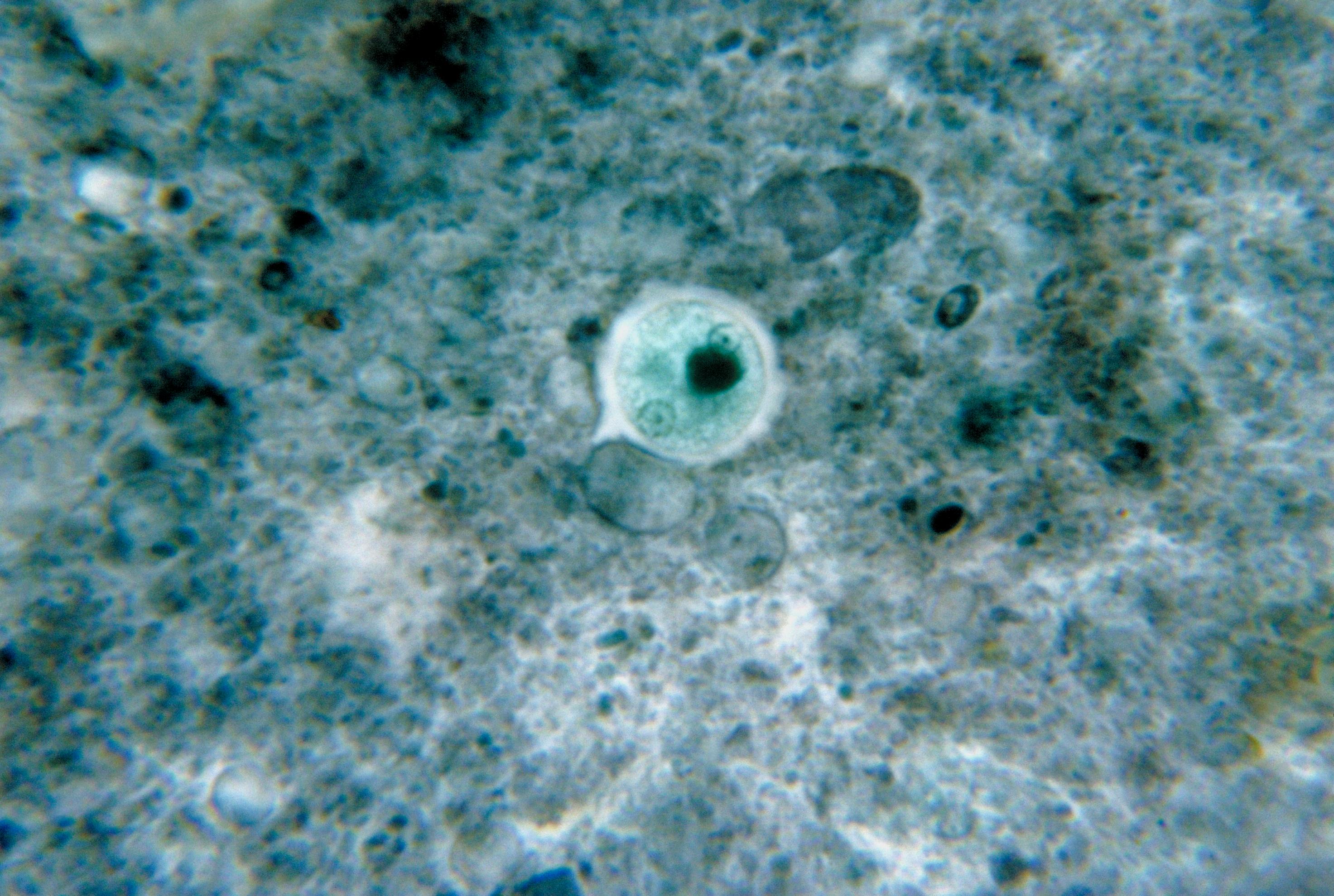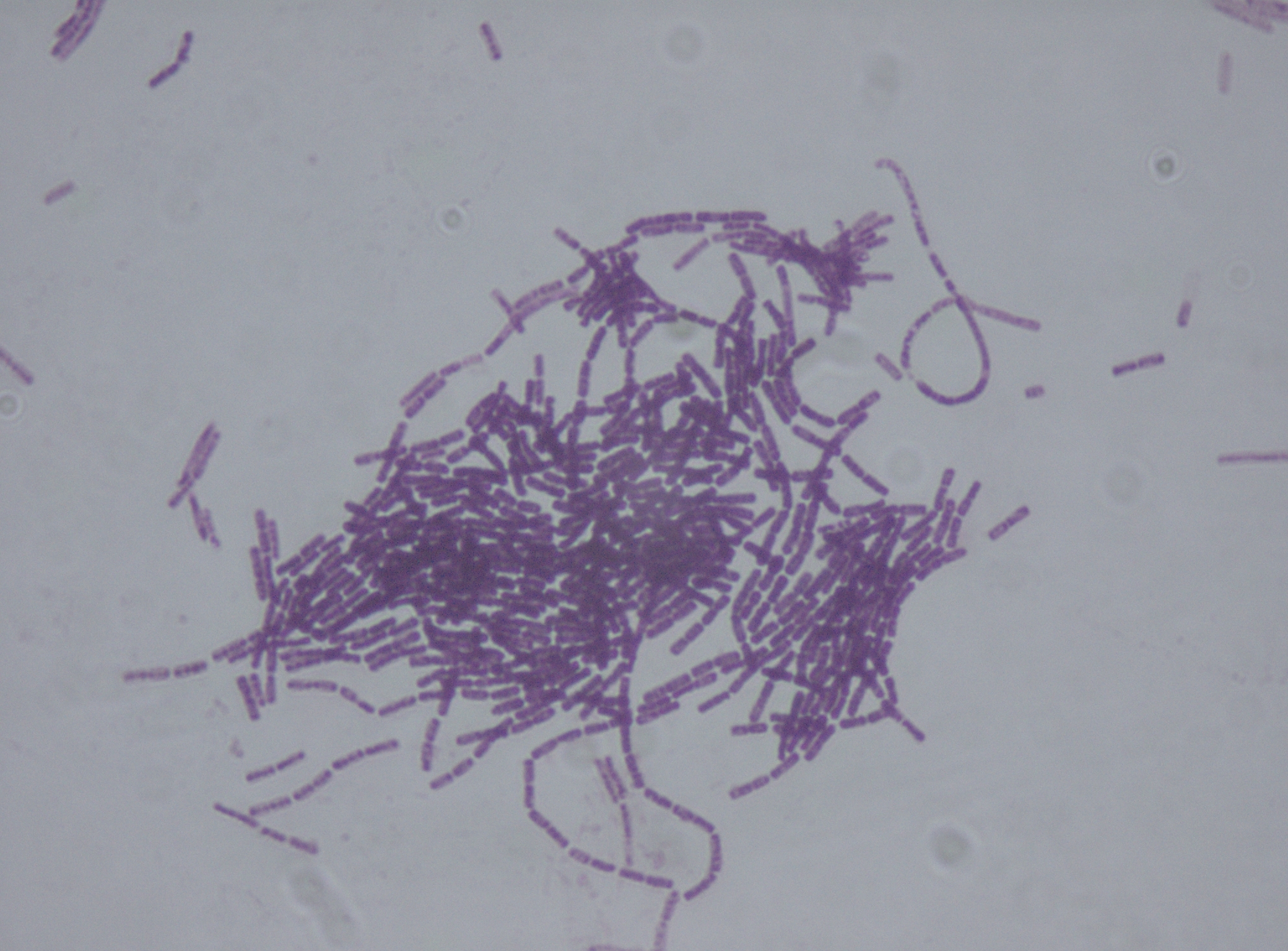|
Endospore
An endospore is a dormant, tough, and non-reproductive structure produced by some bacteria in the phylum Bacillota. The name "endospore" is suggestive of a spore or seed-like form (''endo'' means 'within'), but it is not a true spore (i.e., not an offspring). It is a stripped-down, dormant form to which the bacterium can reduce itself. Endospore formation is usually triggered by a lack of nutrients, and usually occurs in Gram-positive bacteria. In endospore formation, the bacterium divides within its cell wall, and one side then engulfs the other. Endospores enable bacteria to lie dormant for extended periods, even centuries. There are many reports of spores remaining viable over 10,000 years, and revival of spores millions of years old has been claimed. There is one report of viable spores of '' Bacillus marismortui'' in salt crystals approximately 25 million years old. When the environment becomes more favorable, the endospore can reactivate itself into a vegetative state. Mos ... [...More Info...] [...Related Items...] OR: [Wikipedia] [Google] [Baidu] |
Bacillus Anthracis
''Bacillus anthracis'' is a gram-positive and rod-shaped bacterium that causes anthrax, a deadly disease to livestock and, occasionally, to humans. It is the only permanent (obligate) pathogen within the genus ''Bacillus''. Its infection is a type of zoonosis, as it is transmitted from animals to humans. It was discovered by a German physician Robert Koch in 1876, and became the first bacterium to be experimentally shown as a pathogen. The discovery was also the first scientific evidence for the germ theory of diseases. ''B. anthracis'' measures about 3 to 5 μm long and 1 to 1.2 μm wide. The reference genome consists of a 5,227,419 bp circular chromosome and two extrachromosomal DNA plasmids, pXO1 and pXO2, of 181,677 and 94,830 bp respectively, which are responsible for the pathogenicity. It forms a protective layer called endospore by which it can remain inactive for many years and suddenly becomes infective under suitable environmental conditions. Because of the resilience ... [...More Info...] [...Related Items...] OR: [Wikipedia] [Google] [Baidu] |
Dipicolinic Acid
Dipicolinic acid (pyridine-2,6-dicarboxylic acid or PDC and DPA) is a chemical compound which plays a role in the heat resistance of bacterial endospores. It is also used to prepare and transition metal complexes for ion chromatography.2,6-Pyridinedicarboxylic acid at Biological role Dipicolinic acid composes 5% to 15% of the dry weight of '''' spores. It has been implicated as responsible for the heat resistance of the |
Bacillus Subtilis Spore
''Bacillus'', from Latin "bacillus", meaning "little staff, wand", is a genus of Gram-positive, rod-shaped bacteria, a member of the phylum ''Bacillota'', with 266 named species. The term is also used to describe bacillus (shape), the shape (rod) of other so-shaped bacteria; and the plural ''Bacilli'' is the name of the class (biology), class of bacteria to which this genus belongs. ''Bacillus'' species can be either obligate aerobes which are dependent on oxygen, or facultative anaerobes which can survive in the absence of oxygen. Cultured ''Bacillus'' species test positive for the enzyme catalase if oxygen has been used or is present. ''Bacillus'' can reduce themselves to oval endospores and can remain in this dormant state for years. The endospore of one species from Morocco is reported to have survived being heated to 420 °C. Endospore formation is usually triggered by a lack of nutrients: the bacterium divides within its cell wall, and one side then engulfs the other. ... [...More Info...] [...Related Items...] OR: [Wikipedia] [Google] [Baidu] |
Bacteria
Bacteria (; : bacterium) are ubiquitous, mostly free-living organisms often consisting of one Cell (biology), biological cell. They constitute a large domain (biology), domain of Prokaryote, prokaryotic microorganisms. Typically a few micrometres in length, bacteria were among the first life forms to appear on Earth, and are present in most of its habitats. Bacteria inhabit the air, soil, water, Hot spring, acidic hot springs, radioactive waste, and the deep biosphere of Earth's crust. Bacteria play a vital role in many stages of the nutrient cycle by recycling nutrients and the nitrogen fixation, fixation of nitrogen from the Earth's atmosphere, atmosphere. The nutrient cycle includes the decomposition of cadaver, dead bodies; bacteria are responsible for the putrefaction stage in this process. In the biological communities surrounding hydrothermal vents and cold seeps, extremophile bacteria provide the nutrients needed to sustain life by converting dissolved compounds, suc ... [...More Info...] [...Related Items...] OR: [Wikipedia] [Google] [Baidu] |
Disinfectants
A disinfectant is a chemical substance or compound used to inactivate or destroy microorganisms on inert surfaces. Disinfection does not necessarily kill all microorganisms, especially resistant bacterial spores; it is less effective than sterilization, which is an extreme physical or chemical process that kills all types of life. Disinfectants are generally distinguished from other antimicrobial agents such as antibiotics, which destroy microorganisms within the body, and antiseptics, which destroy microorganisms on living tissue. Disinfectants are also different from biocides—the latter are intended to destroy all forms of life, not just microorganisms. Disinfectants work by destroying the cell wall of microbes or interfering with their metabolism. It is also a form of decontamination, and can be defined as the process whereby physical or chemical methods are used to reduce the amount of pathogenic microorganisms on a surface. Disinfectants can also be used to destroy ... [...More Info...] [...Related Items...] OR: [Wikipedia] [Google] [Baidu] |
Bacillus Cereus
''Bacillus cereus'' is a Gram-positive bacteria, Gram-positive Bacillus, rod-shaped bacterium commonly found in soil, food, and marine sponges. The specific name, ''cereus'', meaning "waxy" in Latin, refers to the appearance of colonies grown on blood agar. Some strains are harmful to humans and cause foodborne illness due to their spore-forming nature, while other strains can be beneficial as probiotics for animals, and even exhibit mutualism with certain plants. ''B. cereus'' bacteria may be Aerobic organism, aerobes or facultative anaerobes, and like other members of the genus ''Bacillus'', can produce protective endospores. They have a wide range of virulence factors, including phospholipase C, cereulide, Metalloproteinase, sphingomyelinase, metalloproteases, and cytotoxin K, many of which are regulated via quorum sensing. ''B. cereus'' strains exhibit Flagellum, flagellar motility. The ''Bacillus cereus'' group comprises seven closely related species: ''B. cereus' ... [...More Info...] [...Related Items...] OR: [Wikipedia] [Google] [Baidu] |
Microbial Cyst
A microbial cyst is a resting or dormant stage of a microorganism, that can be thought of as a state of suspended animation in which the metabolic processes of the cell are slowed and the cell ceases all activities like feeding and locomotion. Many groups of single-celled, microscopic organisms, or microbes, possess the ability to enter this dormant state. Encystment, the process of cyst formation, can function as a method for dispersal and as a way for an organism to survive in unfavorable environmental conditions. These two functions can be combined when a microbe needs to be able to survive harsh conditions between habitable environments (such as between hosts) in order to disperse. Cysts can also be sites for nuclear reorganization and cell division, and in parasitic species they are often the infectious stage between hosts. When the encysted microbe reaches an environment favorable to its growth and survival, the cyst wall breaks down by a process known as excystation. E ... [...More Info...] [...Related Items...] OR: [Wikipedia] [Google] [Baidu] |
Clostridium Botulinum
''Clostridium botulinum'' is a Gram-positive bacteria, gram-positive, Bacillus (shape), rod-shaped, Anaerobic organism, anaerobic, endospore, spore-forming, Motility, motile bacterium with the ability to produce botulinum toxin, which is a neurotoxin. ''C. botulinum'' is a diverse group of pathogenic bacteria. Initially, they were grouped together by their ability to produce botulinum toxin and are now known as four distinct groups, ''C. botulinum'' groups I–IV. Along with some strains of ''Clostridium butyricum'' and ''Clostridium baratii'', these bacteria all produce the toxin. Botulinum toxin can cause botulism, a severe Flaccid paralysis, flaccid paralytic disease in humans and other animals, and is the most potent toxin known to science, natural or synthetic, with a lethal dose of 1.3–2.1 ng/kg in humans.(2010). Chapter 19. ''Clostridium'', ''Peptostreptococcus'', ''Bacteroides'', and Other Anaerobes. In Ryan K.J., Ray C (Eds), ''Sherris Medical Microbiology'', 5th ... [...More Info...] [...Related Items...] OR: [Wikipedia] [Google] [Baidu] |
Bacillus Thuringiensis
''Bacillus thuringiensis'' (or Bt) is a gram-positive bacteria, gram-positive, soil-dwelling bacterium, the most commonly used biological pesticide worldwide. ''B. thuringiensis'' also occurs naturally in the gut of caterpillars of various types of moths and butterfly, butterflies, as well as on leaf surfaces, aquatic environments, animal feces, insect-rich environments, flour mills and grain-storage facilities. It has also been observed to parasitize moths such as ''Cadra calidella''—in laboratory experiments working with ''C. calidella'', many of the moths were diseased due to this parasite. During Endospore, sporulation, many Bt strains produce crystal proteins (proteinaceous inclusions), called delta endotoxins, that have Insecticide, insecticidal action. This has led to their use as insecticides, and more recently to genetically modified crops using Bt genes, such as Genetically modified maize#Bt corn, Bt corn. Many crystal-producing Bt strain (biology), strains, though, d ... [...More Info...] [...Related Items...] OR: [Wikipedia] [Google] [Baidu] |
Archaea
Archaea ( ) is a Domain (biology), domain of organisms. Traditionally, Archaea only included its Prokaryote, prokaryotic members, but this has since been found to be paraphyletic, as eukaryotes are known to have evolved from archaea. Even though the domain Archaea Cladistics, cladistically includes eukaryotes, the term "archaea" (: archaeon , from the Greek "ἀρχαῖον", which means ancient) in English still generally refers specifically to prokaryotic members of Archaea. Archaea were initially Taxonomy (biology), classified as bacteria, receiving the name archaebacteria (, in the Archaebacteria Kingdom (biology), kingdom), but this term has fallen out of use. Archaeal cells have unique properties separating them from Bacteria and Eukaryote, Eukaryota. Archaea are further divided into multiple recognized phylum, phyla. Classification is difficult because most have not been Isolation (microbiology), isolated in a laboratory and have been detected only by their Gene, gene s ... [...More Info...] [...Related Items...] OR: [Wikipedia] [Google] [Baidu] |
Clostridium Tetani
''Clostridium tetani'' is a common soil bacterium and the causative agent of tetanus. Vegetative cells of ''Clostridium tetani'' are usually rod-shaped and up to 2.5 μm long, but they become enlarged and tennis racket- or drumstick-shaped when forming spores. ''C. tetani'' spores are extremely hardy and can be found globally in soil or in the gastrointestinal tract of animals. If inoculated into a wound, ''C. tetani'' can grow and produce a potent toxin, tetanospasmin, which interferes with motor neurons, causing tetanus. The toxin's action can be prevented with tetanus toxoid vaccines, which are often administered to children worldwide. Characteristics ''Clostridium tetani'' is a rod-shaped, Gram-positive bacterium, typically up to 0.5 μm wide and 2.5 μm long. It is motile by way of various flagella that surround its body. ''C. tetani'' cannot grow in the presence of oxygen. It grows best at temperatures ranging from 33 to 37 °C. Upon exposure to various condi ... [...More Info...] [...Related Items...] OR: [Wikipedia] [Google] [Baidu] |







